Julie Deshayes
Learning to generate physical ocean states: Towards hybrid climate modeling
Feb 04, 2025

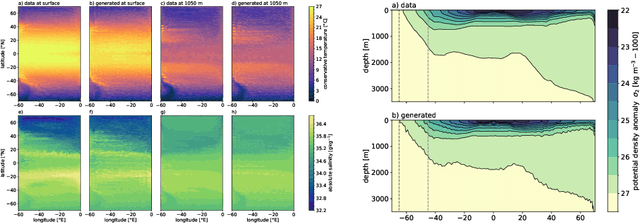
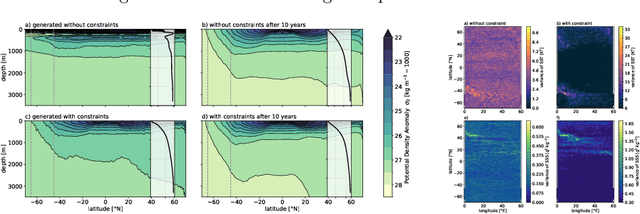
Abstract:Ocean General Circulation Models require extensive computational resources to reach equilibrium states, while deep learning emulators, despite offering fast predictions, lack the physical interpretability and long-term stability necessary for climate scientists to understand climate sensitivity (to greenhouse gas emissions) and mechanisms of abrupt % variability such as tipping points. We propose to take the best from both worlds by leveraging deep generative models to produce physically consistent oceanic states that can serve as initial conditions for climate projections. We assess the viability of this hybrid approach through both physical metrics and numerical experiments, and highlight the benefits of enforcing physical constraints during generation. Although we train here on ocean variables from idealized numerical simulations, we claim that this hybrid approach, combining the computational efficiency of deep learning with the physical accuracy of numerical models, can effectively reduce the computational burden of running climate models to equilibrium, and reduce uncertainties in climate projections by minimizing drifts in baseline simulations.
Semi-automatic tuning of coupled climate models with multiple intrinsic timescales: lessons learned from the Lorenz96 model
Aug 16, 2022
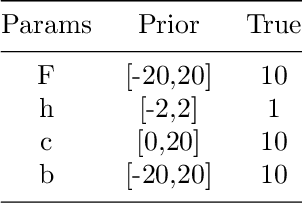
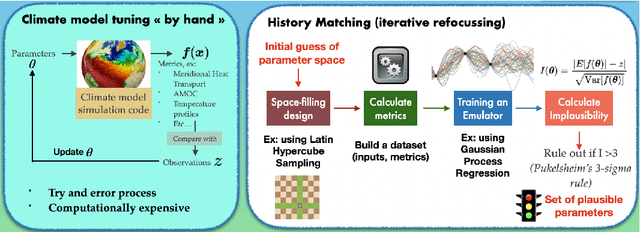
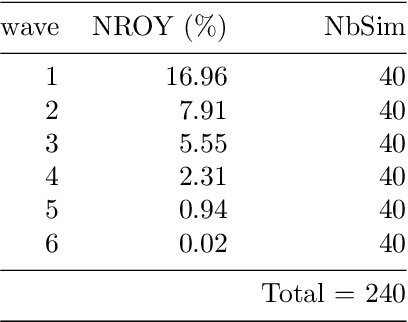
Abstract:The objective of this study is to evaluate the potential for History Matching (HM) to tune a climate system with multi-scale dynamics. By considering a toy climate model, namely, the two-scale Lorenz96 model and producing experiments in perfect-model setting, we explore in detail how several built-in choices need to be carefully tested. We also demonstrate the importance of introducing physical expertise in the range of parameters, a priori to running HM. Finally we revisit a classical procedure in climate model tuning, that consists of tuning the slow and fast components separately. By doing so in the Lorenz96 model, we illustrate the non-uniqueness of plausible parameters and highlight the specificity of metrics emerging from the coupling. This paper contributes also to bridging the communities of uncertainty quantification, machine learning and climate modeling, by making connections between the terms used by each community for the same concept and presenting promising collaboration avenues that would benefit climate modeling research.
Explainable Artificial Intelligence for Bayesian Neural Networks: Towards trustworthy predictions of ocean dynamics
Apr 30, 2022

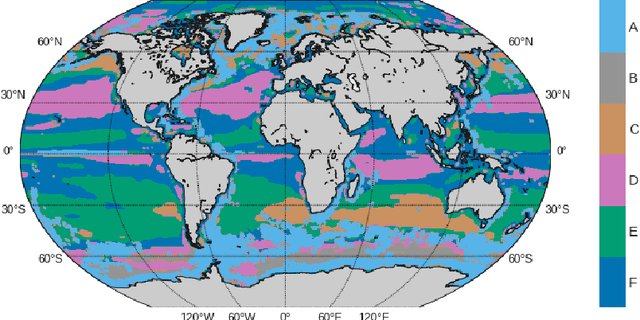

Abstract:The trustworthiness of neural networks is often challenged because they lack the ability to express uncertainty and explain their skill. This can be problematic given the increasing use of neural networks in high stakes decision-making such as in climate change applications. We address both issues by successfully implementing a Bayesian Neural Network (BNN), where parameters are distributions rather than deterministic, and applying novel implementations of explainable AI (XAI) techniques. The uncertainty analysis from the BNN provides a comprehensive overview of the prediction more suited to practitioners' needs than predictions from a classical neural network. Using a BNN means we can calculate the entropy (i.e. uncertainty) of the predictions and determine if the probability of an outcome is statistically significant. To enhance trustworthiness, we also spatially apply the two XAI techniques of Layer-wise Relevance Propagation (LRP) and SHapley Additive exPlanation (SHAP) values. These XAI methods reveal the extent to which the BNN is suitable and/or trustworthy. Using two techniques gives a more holistic view of BNN skill and its uncertainty, as LRP considers neural network parameters, whereas SHAP considers changes to outputs. We verify these techniques using comparison with intuition from physical theory. The differences in explanation identify potential areas where new physical theory guided studies are needed.
 Add to Chrome
Add to Chrome Add to Firefox
Add to Firefox Add to Edge
Add to Edge